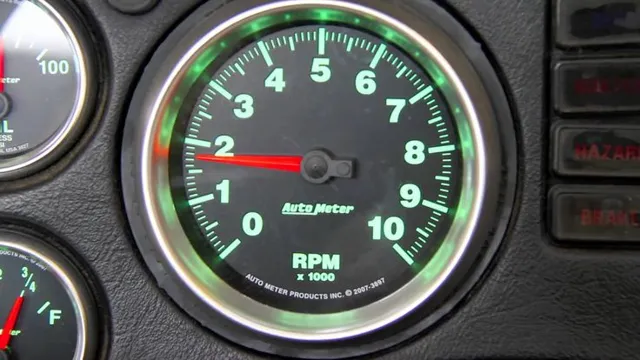Introduction
The speedometer, a crucial instrument in any vehicle, provides drivers with real-time information about their speed. However, a malfunctioning speedometer can lead to incorrect readings and compromise safety. One common issue that drivers may encounter is a bouncing speedometer needle, which can make it difficult to determine the precise speed of the vehicle. Understanding the causes and implementing effective solutions to fix a bouncing speedometer needle is essential for maintaining accurate and safe driving.

Image: www.rewritetherules.org
In this comprehensive guide, we will delve into the world of speedometer operation, explore the potential causes behind a bouncing needle, and provide step-by-step instructions for troubleshooting and repairing this common problem. Whether you’re a seasoned mechanic or a novice car enthusiast, this article will empower you with the knowledge and skills to restore the precision of your speedometer and ensure a smooth and informed driving experience.
Understanding Speedometer Operation
To effectively troubleshoot a bouncing speedometer needle, it’s important to first understand the underlying principles of speedometer operation. Traditionally, speedometers employed mechanical mechanisms, utilizing a speedometer cable connected to the transmission or wheel sensor. As the vehicle moved, the cable would rotate a magnet within the speedometer, inducing a corresponding needle movement to indicate speed.
In modern vehicles, mechanical speedometers have largely given way to electronic systems. These systems typically utilize wheel speed sensors, which generate electrical signals proportional to the rotational speed of the wheels. These signals are then processed by the electronic control unit (ECU), which calculates the vehicle’s speed and displays it on the digital or analog speedometer.
Causes of Bouncing Speedometer Needle
Several factors can contribute to a bouncing speedometer needle, including:
- Faulty Speedometer Cable (Mechanical Speedometers): In mechanical speedometers, a damaged or worn speedometer cable can cause the needle to bounce due to erratic signal transmission from the transmission to the speedometer.
- Malfunctioning Wheel Speed Sensor (Electronic Speedometers): Electronic speedometers rely on accurate signals from wheel speed sensors to calculate speed. A faulty or dirty wheel speed sensor can provide inconsistent signals, leading to a bouncing needle.
- Electrical Issues: Electrical problems, such as loose connections, faulty wiring, or a failing voltage regulator, can disrupt the electrical signals required for speedometer operation, resulting in a bouncing needle.
- Mechanical Problems: In mechanical speedometers, worn gears or a faulty speedometer head can cause the needle to bounce as it struggles to accurately reflect the vehicle’s speed.
- Interference from Other Electronic Devices: In rare cases, electromagnetic interference from other electronic devices in the vehicle, such as poorly shielded audio systems, can affect the speedometer’s operation.
Step-by-Step Troubleshooting and Repair

Image: motorriderz.com
Mechanical Speedometers
1. Inspect the Speedometer Cable: Examine the speedometer cable for any visible damage or wear. Replace the cable if it shows signs of fraying, kinking, or excessive rust.
2. Check Cable Connections: Ensure that the speedometer cable is securely connected to both the transmission and the speedometer head. Tighten any loose connections.
3. Lubricate the Cable: Apply a small amount of speedometer cable lubricant to the inner cable and housing. This will reduce friction and improve signal transmission.
4. Test the Speedometer Head: If cable inspection and lubrication do not resolve the issue, the speedometer head may be faulty. Test the head by manually rotating the speedometer cable input and observing the needle movement. A smooth and consistent needle movement indicates a functional head.
How To Fix Bouncing Speedometer Needle
Electronic Speedometers
1. Scan for Diagnostic Trouble Codes (DTCs): Connect an OBD-II scanner to the vehicle’s diagnostic port and scan for any stored DTCs related to the speedometer or wheel speed sensors.
2. Inspect Wheel Speed Sensors: Locate the wheel speed sensors and visually inspect them for any damage or debris. Clean the sensors and their connectors using electrical contact cleaner.
3. Test Wheel Speed Sensors: Use a multimeter to test the electrical resistance of the wheel speed